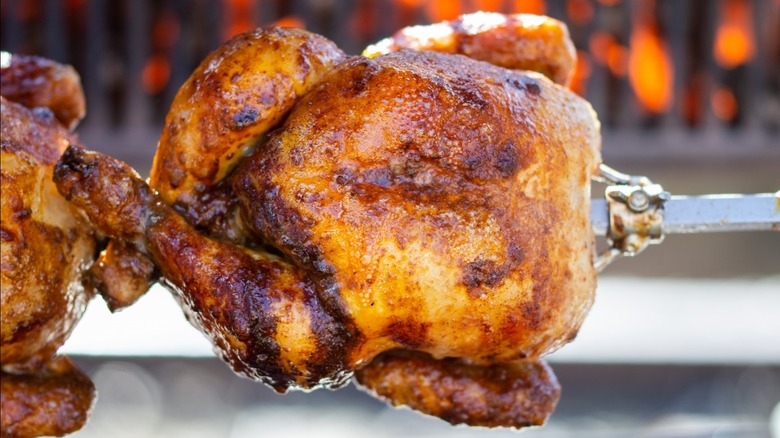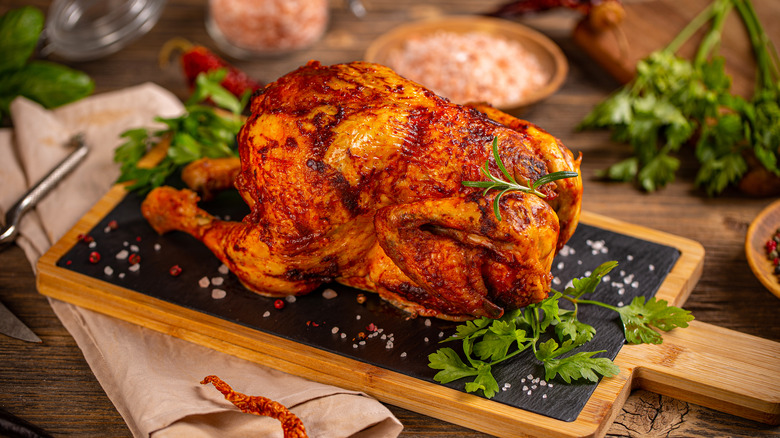Are Rotisserie Chickens Really Recession-Proof?
Like many food items, chicken prices have been on something of a roller coaster ride since the pandemic. Per the National Chicken Council, wholesale prices of chicken were at 76.8 cents per pound in 2019 before falling to 67 cents per pound in 2020, and then jumping again in 2021 to hit 85.4 cents per pound. In May, Bloomberg says prices are at the highest they've been in years, thanks to a confluence of events including an outbreak of avian influenza, African swine fever, and a drought triggered by unfavorable weather conditions. That this should come as the world is still trying to come out of the COVID-19 pandemic does not help.
And even though wholesale chicken prices have spiked 16.4% from last year, per Axios, the one food item that remains inflation-proof — aside from Costco's $1.50 hot dog and soda combo — is the price of rotisserie chickens at major grocery stores around the country. The item continues to be priced to sell at $4.99 at Costco and BJ's, $5.99 at Meijer, $6.99 at Giant Eagle, and $.739 at Publix, per CNN Business.
Rotisserie chicken prices can't be beaten
Despite inflationary pressures, chief executives like BJ's CEO Bob Eddy have said the company won't move on the price of its rotisserie chickens, calling it a "headline example where we haven't moved off the price given double-digit inflation in that particular item because it's such a meaningful thing to our members," per Seeking Alpha. Over at Giant Eagle, Dan Donovan echoed the same sentiment, telling CNN Business that its rotisserie chicken was considered "a very popular center of the plate item [and] we believe it's important to maintain a strong overall value for this item." Costco is so committed to keeping its rotisserie chicken at this price, that it even has a special facility that allows the chain to take the chicken from their farm to your table.
But sentiment is not the only driver for groceries to keep their rotisserie chicken prices unchanged. St. Joseph University Associate Professor for Food Marketing Ernest Baskin says the chickens "[are] a way of the store giving you a discount on a very highly prominent item and then making up the money on some of the other items in the store" per NPR.
This explains why the chickens sit at the back of the store — because if you drop by for a rotisserie chicken, chances are you'll want a salad, sides, or juice and soda to go with it, making rotisserie chicken inflation-proof — at least for now.

